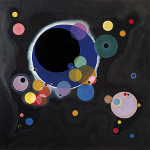Localizing and recovering electrical activity of the brain from M/EEG measurements is known as the M/EEG inverse problem. Solving the inverse problem is the key to identify anatomical location of sources that produced the observed measurements [1]. In this work, cortical activity is modeled using a linear distributed source model. This means we need to estimate amplitudes of a predetermined number of sources with xed positions and orientations. Since there are innitely many current source congurations that can produce the same measured electric and/or magnetic eld, this problem is ill{posed. Therefore, prior assumptions or constraints need to be introduced.
The majority of the methods based on this model use spatial and/or temporal constraints, without taking account of long-range connectivity. This long-range connectivity can be obtained non-invasively using diusion MRI (dMRI) tractography through the reconstruction of white matter ber tracts. Each such ber tract is a streamline, which represents a direct long-range connection between brain areas. The goal of this work is to include supplementary information coming from dMRI into the MEG source reconstruction process. The information used is anatomical connections and transmission delays between cortical regions.
Traditional methods yield solutions that are smooth in space and/or time only along the cortical surface. Low resolution brain electromagnetic tomography [2] (LORETA) assumes simultaneous and synchronous activations of neighbouring areas. The obtained solution is the "smoothest" current density capable of explaining the measured data. In other words, the current density at any point on the cortex is maximally similar to the average current density of its neighbours. The solution is maximally smooth in the sense that the norm of discrete Laplacian of the current distribution is minimized.
We propose a new connectivity-informed spatio-temporal approach to constrain the inverse problem and estimate the dipole intensities. This approach modies the LORETA method to take into account long-range connectivity incorporated via the Laplacian matrix. Time-evolving block diagonal Laplacian matrix is constructed according to both short-range and long-range connectivity. Short-range or local connectivity is considered to be the connectivity between adjacent brain areas. The inuence of delayed activity coming from other brain regions is added into the model via long-range connectivity.
For example, imagine there are two spatially distant regions P1 and P2 connected by a streamline. The transmission delay can be calculated based on the length of the streamline and the information of signal speed along ber tracts. In traditional methods, solutions S(P1; t) and S(P2; t+) would be independent. In this work, we use spatio-temporal metrics which accounts for brain regions with long-range connections, making these two solutions dependent.
Since ground truth of the source-level brain activity is unknown, validation of the accuracy of the proposed method is achieved using simulations. Those were preformed using MNE-Python software [3] based on realistic subject anatomy from Human Connectome Project [4] dataset. The cerebral cortex was parcellated into neuroanatomical regions of interest according to the Desikan-Killiany atlas [5], that has 34 parcels per hemisphere. In previous work [6] each cortical region was considered as a source of activity and it was assumed to be constant over that region. In this work, each vertex of the cortical mesh is considered as a potential source. Its activity is simulated according to a multivariate autoregressive model whose order is chosen according to delays found in the streamlines. Results of the reconstruction of this activity from simulated MEG measurements are presented and compared to original Loreta method.
Acknowledgments { this work has received funding from the European Research Council (ERC) under the European Union's Horizon 2020 research and innovation program (ERC Advanced Grant agreement No 649665: CoBCoM {Computational Brain Connectivity Mapping)
References
[1] S. Baillet, \Magnetoencephalography for brain electrophysiology and imaging," Nature Neuroscience, vol. 20, pp. 327{339, 2017.
[2] R. D. Pascual-Marqui, C. M. Michel, and D. Lehmann, \Low resolution electromagnetic tomography: a new method for localizing electrical activity in the brain," International Journal of psychophysiology, vol. 18, no. 1, pp. 49{65, 1994.
[3] A. Gramfort, M. Luessi, E. Larson, D. A. Engemann, D. Strohmeier, C. Brodbeck, L. Parkkonen, and M. S. Hamalainen, \Mne software for processing meg and eeg data," Neuroimage, vol. 86, pp. 446{460, 2014.
[4] D. C. Van Essen, S. M. Smith, D. M. Barch, T. E. Behrens, E. Yacoub, K. Ugurbil, W.-M. H. Consortium et al., \The wu-minn human connectome project: an overview," Neuroimage, vol. 80, pp. 62{79, 2013.
[5] R. S. Desikan, F. Segonne, B. Fischl, B. T. Quinn, B. C. Dickerson, D. Blacker, R. L. Buckner, A. M. Dale, R. P. Maguire, B. T. Hyman et al., \An automated labeling system for subdividing the human cerebral cortex on mri scans into gyral based regions of interest," Neuroimage, vol. 31, no. 3, pp. 968{980, 2006.
[6] I. Kojcic, T. Papadopoulo, R. Deriche, and S. Deslauriers-Gauthier, \Connectivity-informed solution for spatio-temporal M/EEG source reconstruction," First meeting of NeuroMod Institute, July 2019.

 PDF version
PDF version
